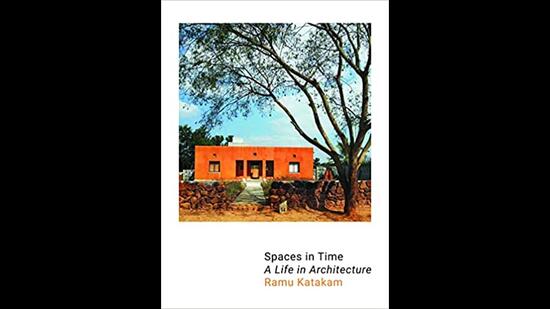Interview: Ramu Katakam, author, Spaces in Time – A Life in Architecture - “I yearn for a return to basics”
The veteran architect and design thinker reflects on his recent memoir and about a life spent among buildings
You have witnessed several epochs in post-Independence India. Your father was a high-ranking government official. You saw Jawaharlal Nehru from close quarters. Rajiv Gandhi was your classmate. Indira Gandhi was friends with your mother. How did the developments in post-Independence India influence your practice as an architect?

One of the reasons for writing the book was to write about growing up and living through the post-Independence era in India. As mentioned in the book, my early link with Nehru helped to form my ideology as a liberal and his vision for India was, for me, more than seeking economic wealth. He felt a diverse country like India must play a part in ushering in a new era for mankind. How we progress as a civilization seems fundamentally the way to reach out to the future. Hence, in running a practice, secular thinking, equality, and respect for every level of workmanship was important to me. We worked on site with masons and carpenters allowing them to be proud of their skills.
You grew up in extremely elite circles. Was it an advantage for your career?
It did help growing up with privileges and getting projects was easier but it did not help when we needed the patronage of visionaries and thinkers, who could look beyond budgets and practicality. Good design can evolve only when a client is willing to give the architect a free hand.
The book also demonstrates your continued interest in research. Did you only read about architecture while designing your buildings? What else contributed to your design thinking?
While studying the master architects, one felt the need not to imitate or copy the West. I always felt the need to find a design philosophy that is relevant to present India; a process that could find an identity to our buildings.

I also want to know your thoughts on sustainable architecture, which is intrinsic to your practice. In current times, why is sustainable architecture so expensive? Is it only affordable for the elite?
Sustainable architecture has its limitations - largely because any kind of different methods of construction needs intense training. Most masons are trained with materials like brick and cement. Even the use of lime is shunned as it involves a lot more work. My house that was made of materials procured within a three-mile(5km) radius of the site is a good case in point. It’s much simpler to work with masons who use building methods used traditionally.
Sustainable architecture such as the bamboo houses of Assam are wonderful examples of low-cost technologies but the newer ones tend to be expensive even if they are eco-friendly.
Do you think of yourself as an artist? Are architects necessarily artists? But if art is meant to provoke a social discourse through an engagement with the public, can architecture perform the same/similar function?
I think all architects consider themselves to be artists in one form or other. The architecture and space created by man makes a huge difference with an evolving civilization. When one lives inside a “work of art” there can be no doubt of the impact it makes on an individual’s life. This can be a longer conversation but it is the core of architecture to transform space.
Writing about architecture or buildings in general must be a difficult task. Through writing, you are also instilling life into an inanimate object. Did you have a blueprint in mind or any benchmark to follow while writing this book?
There was no benchmark in trying to express some of the ideas that came up while writing the book. It was largely a personal view of how I have looked at and designed buildings. The attempt was to try to be true to creativity and not fall under the influence of the masters but respect their skill and concern for making forms in a modern age.
You have lived in various parts of India and abroad. You have seen buildings all over the world and worked with masters. How did you create your own style and find a voice as an independent architect?
Living in many parts of India and abroad certainly made an impact in the way I designed but it can be noticed in my buildings which were different from one project to another. It was always an attempt to shun the “international style” and generate forms that may be unique (the competition design for the Indira Gandhi Open University in particular, which I discuss in the book, for instance).
You now live a semi-retired life in Goa. Is there anything that Ramu Katakam still yearns for or wants to do?
Although I do not practice in the normal sense, the search for history and traditions of various civilizations around the world had been my primary concern. Our modern age with all the technology and wealth is proceeding to destroy the earth, whereas in earlier ages, there was a concern for survival and the spiritual growth of different faiths. They may have even lived better lives. The present is a nightmare and I do yearn for a return to basics. The hunter gatherer (such as those tribals found in Jharkhand and other forests of India) have lived for centuries without changing their needs. They can outlive any pandemic and certainly the destruction of the planet.
My present design is for a settlement that is independent of the electricity grid or water supply. It may be difficult to live so independently as we are always drawn to the buzz of a city but we need to try for survival.
Kunal Ray is a culture critic. He teaches literary & cultural studies at FLAME University, Pune





